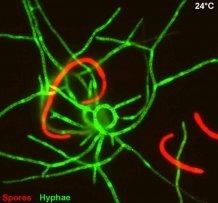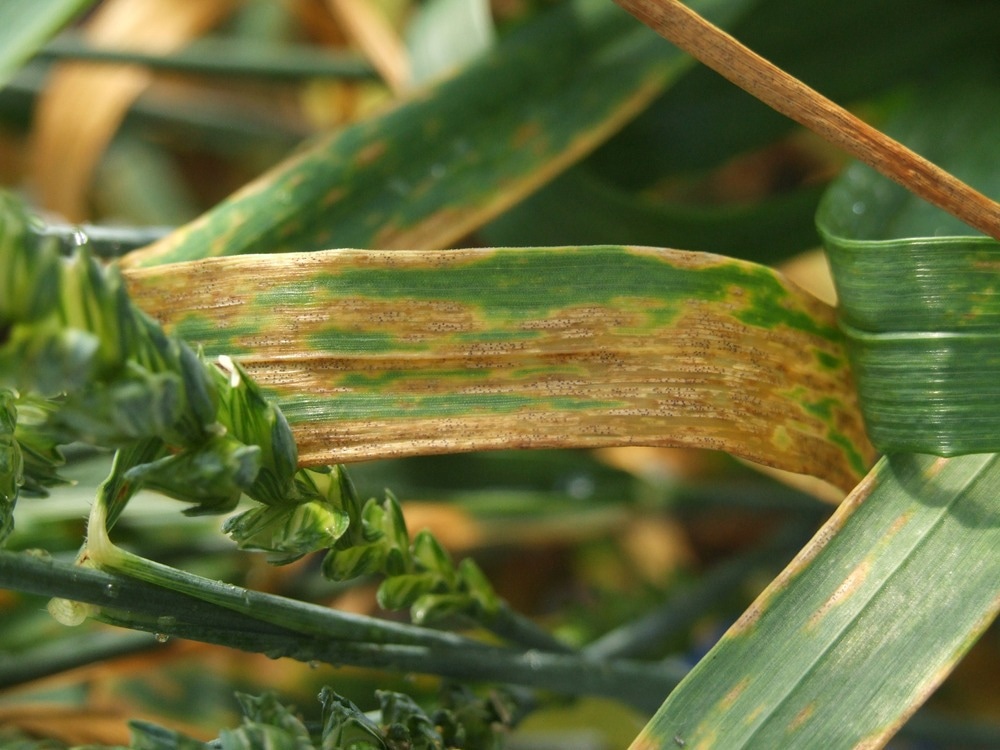The most damaging fungal disease of wheat farmed in temperate regions worldwide, Septoria tritici blotch, is brought on by the fungus Zymoseptoria tritici.
 The pathogenic fungus Zymoseptoria tritici. A novel molecular tool allows microscopic detection of non-pathogenic spores (red) and the invasive hyphae (green). Image Credit: University of Exeter
The pathogenic fungus Zymoseptoria tritici. A novel molecular tool allows microscopic detection of non-pathogenic spores (red) and the invasive hyphae (green). Image Credit: University of Exeter
In France, Germany, and the UK alone, this disease costs between three quarters and one and a half billion euros in crop losses, and another billion euros is spent on chemical control of the fungus.
It lowers wheat yields by 5–10% annually. A significant advance was made in the understanding of the molecular processes behind the pathogen’s aggressiveness by researchers at the University of Exeter.
A multidisciplinary approach was employed by a team from Exeter, funded by the BBSRC, to better understand how the pathogen’s plant-invasive form develops. The team was directed by Professor Gero Steinberg.
The fungus enters wheat leaves during this so-called hyphal stage by stomata, which are natural holes that open and close in response to ambient light levels.

Image Credit: Viirin/Shutterstock.com
Utilizing methods from cell and molecular biology, bioinformatics, and plant pathology, the researchers discovered that the production of the plant-infecting invasive hyphae is triggered by a combination of mild temperatures and chemicals from the wheat leaf. The pathogen is “reprogrammed” in response to such a modification, preparing the fungus for plant attack.
The creation of an advanced “molecular tool” gave the researchers the ability to conduct a visual genetic screen to find the factors that reprogram the fungus to produce invasive hypha. Surprisingly, this method showed the existence of a “master regulator” that is known to perceive light in other creatures.
According to the study, this regulator detects the same light circumstances that cause the plant’s stomata to open, commencing and synchronizing the invading hypha’s emergence at a time when the plant is most vulnerable.
The finding of a single “master regulator” for pathogenicity in Zymoseptoria tritici, a wheat disease, is extremely significant since it offers a key target for the creation of new management methods for the Septoria tritici blotch in wheat.
Our multi-disciplinary approach targeted the core of pathogenicity of the Septoria tritici blotch fungus. Having identified the factor that controls formation of the invasive form of the pathogen provides hope for developing ways to protect our wheat crops against this economically important disease.”
Gero Steinberg, Professor, Cell Biology, University of Exeter
Professor Sarah J. Gurr, who holds a Chair in Food Security at the University of Exeter and was a member of the Exeter team responsible for this discovery, stated, “Wheat is grown over more land area than any other global crop. This disease causes huge losses of this precious calorie crop in temperate growing areas. This research describes the identification of a very significant target in our quest to ensure global food security.”
Source:
Journal reference:
Kilaru, S., et al. (2022). Zymoseptoria tritici white-collar complex integrates light, temperature and plant cues to initiate dimorphism and pathogenesis. Nature Communications. doi.org/10.1038/s41467-022-33183-2